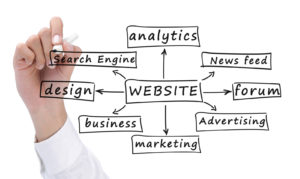Without strong branding that supports your product, it is unlikely that a buyer will choose you over a competitor. Today, with the expansion of the market and the existence of many options to choose from in front of customers, the importance of branding products is felt more than ever.
Product branding identifies the goods in your store. Good branding can allow your specific products to stand out from the competition and build loyalty in your audience that drives them to your store. This identity has many components, including Logos, Designing, packing, Messaging structure, Brand letter and, slogan, site. Product branding is not a job but the result of a set of strategic activities, design, marketing, and advertising.
These components are brought together to create an emotional connection with the customer. If so, branding and creating a principled emotional connection is hard work. Product branding involves different aspects of your product (and the store in general) that together affect how buyers feel.
Branding new products
The brand seems to be the promise that your products and how they are presented to customers. Branding is heavily influenced by the expectations you create for consumers with your products, and it depends on whether you meet those expectations.
store products branding
Branding may be a vague concept for you so far. But the good news is that by the end of the article you will know everything about branding. If you can write a strategy for branding your store products, you will be able to make their store products communicate with customers and arouse positive emotions in them.
Here are some things to keep in mind when developing a product branding strategy: Boring work | Product identity design. Take a step back before contacting a graphic designer and requesting new and attractive product logos. Research and research that research is the starting point of any activity.
In the research process, you must answer questions such as: What are the values and beliefs of my business? What is the purpose of producing my products? Who am I trying to serve and why? How does my ideal client think about the world? What are his tastes and preferences? What makes them feel valued? How can I communicate with them on a deep emotional level? What does my product promise to customers? And does it work? How do people see my product line and the business now? How do I want people to see my business and products grow? These questions may require you to go out and interview customers, talk to buyers, and identify market feedback.
Duplicate tasks Customer service strategy for branding products
Focusing on customer service can turn negative perceptions into positive ones (and loyal customers). To do this, you need to do two things:
1- Be stable
Product branding requires coherence and consistency in image design, product design, quality, and messaging. To create a cohesive brand, do the following: Create a clear brand message that every product should convey. Specify a color palette for your designs. Provide a guide that clearly states what your brand tone is.
2- Involve your team as well
If your products can create an emotional connection with your customers, imagine what surprises they would be able to create if your human team could support your branding efforts. Train them to interact with each buyer. These resources include your company’s philosophies, values, and missions. Does your team understand your biggest goals as a retailer? Do they know what message your store and products want to send? Give them this information and let them act on it. You can provide guidelines for interacting with the customer that reflect the personality of your store.
Examples of great product branding
If you are still unsure how you can implement these ideas in building a strong brand for your product, check out how others brand their products.
Coca Cola
Certainly more than 100 years of winning the beverage race have not been for anything. Everything from Coca-Cola to websites and social media and advertising campaigns conveys a consistent message and feeling. Coca-Cola is adamant about the consistency of its product branding; From logos, advertising campaigns, social media, and even the shape of their bottles.
Target
You can look at almost any type of advertising from Target Retail and find out exactly if the ad belongs to Target; Even without seeing the target logo.
The feeling is extraordinary, fun, and energetic along with the aesthetic, memorable, and perfectly in line with the personality of the company and how their customers feel. That’s all a great brand should have; What makes buyers prefer this store to cheaper or more suitable competitors.
Harley-Davidson
If branding is emotion-driven, Harley-Davidson does it best. The motor company is making great efforts to establish a very clear relationship between the customer and the company and its owner. Customers feel that they are part of something unique to motorcycle owners and professional riders. Branding can be difficult because Its camel is about working with emotions and feelings rather than tangible and objective things.
Conclusion
Keeping the following in mind will help you create an identity for the products you sell so that the products you choose can appear unique and unique to your customers:
Branding is about feelings and emotions. Let your values and mission guide you. Ask yourself how I want customers to think about my retail store and its products. If your products promise one thing and customers get something else, branding will fail. Make sure you are consistent in both design and packaging, as well as in your messaging and delivery.
Branding is not the result of having a great logo or great packaging or a high-quality product, but a combination of all of these things. Through these tangible elements such as logo and design, you can create a harmonious message and offer a special experience through the products themselves; In a way that speaks to the feelings and desires of your customers. By doing this, you help build customer loyalty to the brand.



